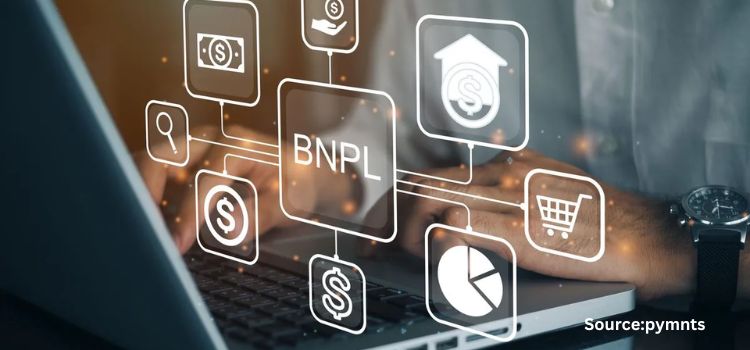
Japan Mobile Payment Market by Age (Generation Z, Millennials, Generation X, and Baby Boomers), by Payment Type (Proximity and Remote), and by Application (Money Transfers, Merchandise Purchases, Bill Payments, Airtime Top-ups, Ticketing, and Others) – Opportunity Analysis and Industry Forecast, 2024–2030
Industry: ICT & Media | Publish Date: 06-Dec-2024 | No of Pages: 111 | No. of Tables: 79 | No. of Figures: 44 | Format: PDF | Report Code : IC2491
US Tariff Impact on Japan Mobile Payment Market
Trump Tariffs Are Reshaping Global Business
Japan Mobile Payment Market Overview
The Japan Mobile Payment Market size was valued at USD 2.67 billion in 2023, and is predicted to reach USD 7.21 billion by 2030, with a CAGR of 14.3% from 2024 to 2030. The mobile payment system, also known as money transfer, mobile money, m-payments, electronic payments, and digital payments, enables financial transactions through mobile devices such as smartphones, tablets, and wearables.
These transactions occur through mobile apps or various methods such as proximity and remote transactions. Mobile payment systems include various types such as mobile wallets, mobile banking apps, and online payment services such as PayPal, Venmo, and Google Pay.
Utilizing technologies such as SMS, near-field communication (NFC), quick response (QR) codes, and others, these systems ensure smooth transactions while employing robust security measures including encryption and biometric authentication to protect personal and financial data.
Praised for their convenience, speed, security, and integration with other financial tools, mobile payment systems experience widespread adoption. Moreover, users can configure payment apps to automatically settle bills, such as utility or credit card bills, ensuring efficient financial management and preventing late payments.
High Adoption of Smartphones Propel the Japan Mobile Payment Market Growth
The widespread adoption of smartphones and the increasing internet penetration are crucial drivers propelling the growth of the mobile payment market in the country. With smartphones becoming ubiquitous and internet connectivity expanding globally, a vast majority of consumers now possess the necessary tools for mobile payments.
Smartphones serve as convenient and portable payment terminals, allowing users to carry out transactions anytime, anywhere. Growing internet penetration ensures seamless connectivity, facilitating secure and real-time payment processing. As more consumers embrace smartphones and gain access to reliable internet services, the potential user base for mobile payments expands exponentially.
This trend not only fosters greater convenience and accessibility for consumers but also incentivizes merchants to adopt mobile payment solutions to cater to evolving consumer preferences, thereby driving the overall Japan mobile payment market growth.
Ease of Use in Mobile Payment Services Drives the Japan Mobile Payment Market Growth
Ease of use is a fundamental driver in the Japan mobile payment market demand, enhancing platform accessibility and user experience. By incorporating simplified interfaces, fast transactions, and robust security measures, trust is established, encouraging widespread adoption among consumers and merchants. Clear support and education further bolster user confidence, ensuring a positive experience and fostering long-term market growth.
Resistance from Traditional Financial Institutions Restrains the Japan Mobile Payment Market Expansion
The Japan mobile payment market expansion faces significant barriers due to resistance from traditional financial institutions in the country. Established banks and financial entities may perceive mobile payment solutions as disruptive to their existing business models, leading to reluctance in supporting or promoting these innovative technologies.
This resistance arises from concerns about potential revenue cannibalization, regulatory complexities, and the perceived threat of losing control over payment infrastructures. Consequently, traditional financial institutions may hesitate to invest in mobile payment initiatives or collaborate with fintech startups and mobile payment providers, impeding the development and adoption of innovative payment solutions.
Overcoming this resistance requires collaboration, regulatory alignment, and education to demonstrate the benefits of mobile payments for both financial institutions and consumers, thus unlocking the full potential of the mobile payment market.
The Emergence of Real-Time Payment Creates Opportunities in the Japan Mobile Payment Market
Real-time payments represent a groundbreaking development in the Japan mobile payment market, providing significant opportunities for growth and advancement in the country. These systems facilitate instantaneous fund transfers between parties, delivering unmatched speed and efficiency.
This innovation empowers mobile payment providers to offer seamless and frictionless payment experiences to consumers and businesses. With real-time payments, transactions can be settled instantly, whether it's splitting bills with friends, making retail purchases, or transferring funds between accounts.
Moreover, the integration of real-time payment capabilities into various sectors, such as e-commerce, peer-to-peer lending, and on-demand services, fosters innovation and expands the mobile payment ecosystem. In summary, the emergence of real-time payments revolutionizes payment processing and creates a fertile ground for growth and innovation in the mobile payment market.
Competitive Landscape
Various market players operating in the Japan mobile payment industry include Alphabet, Inc. (Google), Alibaba Group Holdings Limited, Amazon.com, Inc., Apple, Inc., PayPal Holdings, Inc., Visa, Inc., Tencent Holdings Limited (WeChat), MasterCard International, Inc., Samsung Electronics Co. Ltd., Block, Inc., and others. These key players have adopted various strategies to strengthen their market share.
Japan Mobile Payment Market Key Segments
By Age
-
Generation Z
-
Millennials
-
Generation X
-
Baby Boomers
By Payment Type
-
Proximity
-
Near-Field Communication (NFC)
-
Quick Response (QR) Code Payments
-
-
Remote
-
Internet Payments
-
SMS/Direct Carrier Billing
-
By Application
-
Money Transfers
-
Merchandise Purchases
-
Bill Payments
-
Airtime Top-ups
-
Ticketing
-
Others
Key Players
-
Alphabet, Inc. (Google)
-
Alibaba Group Holdings Limited
-
Amazon.com, Inc.
-
Apple, Inc.
-
PayPal Holdings, Inc.
-
Visa, Inc.
-
Tencent Holdings Limited (WeChat)
-
MasterCard International, Inc.
-
Samsung Electronics Co. Ltd.
-
Block, Inc.
REPORT SCOPE AND SEGMENTATION:
|
Parameters |
Details |
|
Market Size in 2023 |
USD 2.67 Billion |
|
Revenue Forecast in 2030 |
USD 7.21 Billion |
|
Growth Rate |
CAGR of 14.3%from 2024 to 2030 |
|
Analysis Period |
2023–2030 |
|
Base Year Considered |
2023 |
|
Forecast Period |
2024–2030 |
|
Market Size Estimation |
Billion (USD) |
|
Growth Factors |
|
|
Companies Profiled |
10 |
|
Market Share |
Available for 10 companies |
|
Customization Scope |
Free customization (equivalent up to 80 working hours of analysts) after purchase. Addition or alteration to country, regional, and segment scope. |
|
Pricing and Purchase Options |
Avail customized purchase options to meet your exact research needs. |

















 Speak to Our Analyst
Speak to Our Analyst




















